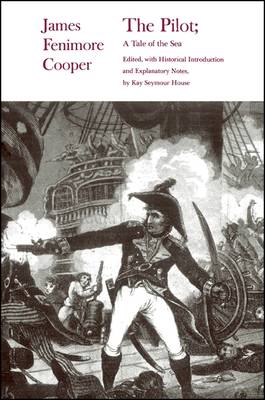
- Afhalen na 1 uur in een winkel met voorraad
- Gratis thuislevering in België vanaf € 30
- Ruim aanbod met 7 miljoen producten
- Afhalen na 1 uur in een winkel met voorraad
- Gratis thuislevering in België vanaf € 30
- Ruim aanbod met 7 miljoen producten
Zoeken
€ 60,95
+ 121 punten
Uitvoering
Omschrijving
Having drawn on local knowledge and private information for The Spy and on his own boyhood experiences for The Pioneers, it was inevitable that Cooper would seek a way to convert yet another area of his special knowledge into art. His first choice of career had been the U.S. Navy, in which he served as a midshipman from 1808 to 1810.
In 1823, Cooper began writing The Pilot, which he saw as a sea novel that seamen would appreciate for its fidelity and yet one that landsmen could understand.
"Cooper's poetic power is reserved for the sea, which is no backdrop but a separate world with forces and laws of its own. The individuation of the ships, particularly the personification of the Ariel, contributes to the magic, but the exhilaration of the book comes from the triumph of human skill and intelligence over the uncertainties and downright hostilities of a world of waves, winds, and hidden reefs. The land offers neither a comparable challenge nor so heady a victory." -- from the Introduction.
In 1823, Cooper began writing The Pilot, which he saw as a sea novel that seamen would appreciate for its fidelity and yet one that landsmen could understand.
"Cooper's poetic power is reserved for the sea, which is no backdrop but a separate world with forces and laws of its own. The individuation of the ships, particularly the personification of the Ariel, contributes to the magic, but the exhilaration of the book comes from the triumph of human skill and intelligence over the uncertainties and downright hostilities of a world of waves, winds, and hidden reefs. The land offers neither a comparable challenge nor so heady a victory." -- from the Introduction.
Specificaties
Betrokkenen
- Auteur(s):
- Uitgeverij:
Inhoud
- Aantal bladzijden:
- 528
- Taal:
- Engels
- Reeks:
Eigenschappen
- Productcode (EAN):
- 9780873957915
- Verschijningsdatum:
- 30/06/1986
- Uitvoering:
- Paperback
- Formaat:
- Trade paperback (VS)
- Afmetingen:
- 150 mm x 227 mm
- Gewicht:
- 712 g

Alleen bij Standaard Boekhandel
+ 121 punten op je klantenkaart van Standaard Boekhandel
Beoordelingen
We publiceren alleen reviews die voldoen aan de voorwaarden voor reviews. Bekijk onze voorwaarden voor reviews.








